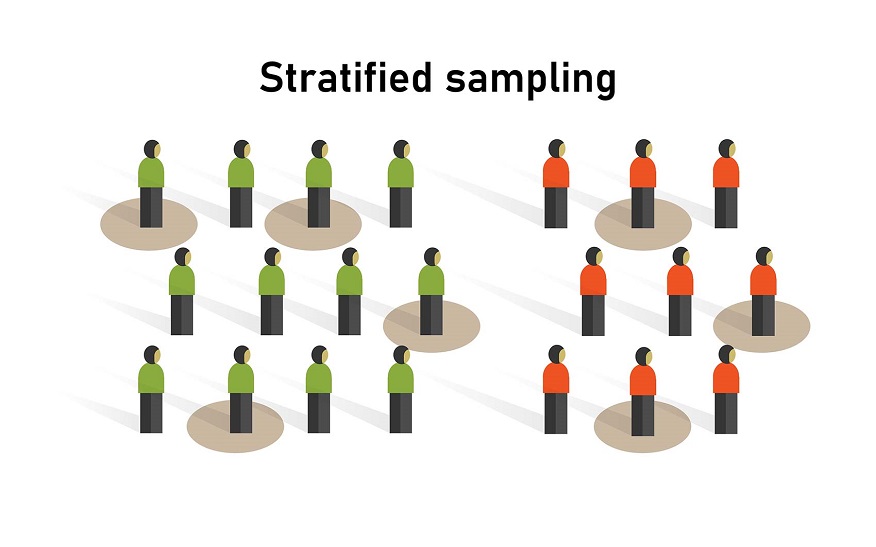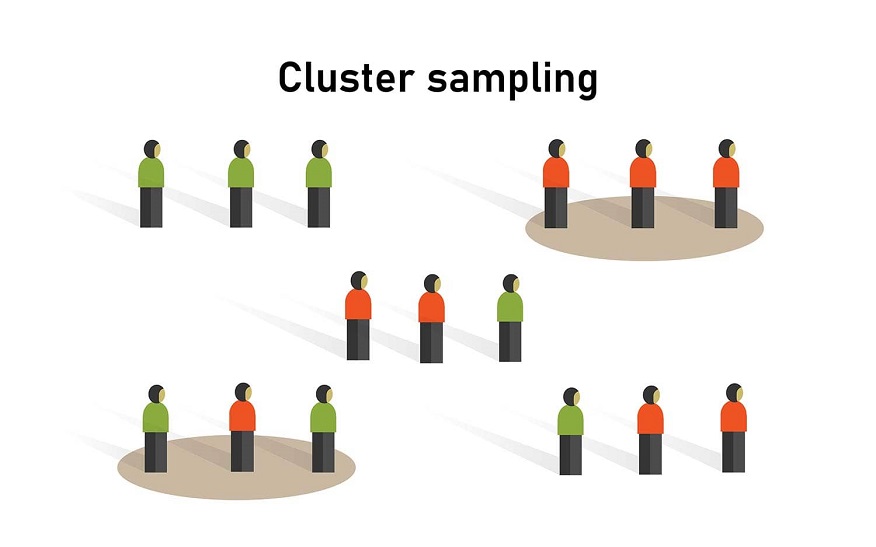
How can you conduct an accurate national survey when there are millions of people to take into account? With such a large number of respondents, conducting a survey would not be possible. However, you can use probability sampling to get as good data, even if it comes from a much smaller group.
Take a hypothetical population of 100 people. It is improbable that anyone would be selected in this scenario, as the odds are 1 in 100. A representative sample of this population is selected for sampling purposes, and its parameters are determined.
Let’s explore this subject in greater detail below.
In What Way Does Probability Sampling Work?
We have traditionally used probability sampling in various ways, from drawing straws to randomly selecting names from a hat. Probability sampling, in its most basic definition, is any sampling technique that makes use of a random selection process.
For a random selection technique to work, you need a system or strategy that guarantees all units within your population have equal chances of getting selected. For instance, a random selection method would ensure equal opportunity for each competitor in an athletic event like football.
What does random selection serve? To guarantee an impartial and fair outcome while employing probability sampling.
Related: Everything You Need To Know About Subgroup Analysis
Different Methods Of Probability Sampling
Simple Random Sampling
Simple random sampling selects a sample at random using a simple algorithm. Numbers can be assigned to each respondent and then picked randomly using a random number generator. The sample is then selected from those confirmed to possess the chosen numbers.
As an example, you might prepare a list of all the members of the population and assign each one a number (1-100). You could choose samples from this population using a lottery or a random number table.
A key advantage is that simple random sampling provides highly representative population samples.
Despite their merits, they are labor-intensive and time-consuming, primarily when producing larger samples.

Stratified sampling
In stratified random sampling, you divide your population into subpopulations that differ substantially. As a result of segmenting your population this way, your sample represents every subgroup fairly, allowing you to draw more accurate conclusions.
For instance, analyzing dietary consumption patterns in a group of people could be more effective if vegetarians or vegans were classified separately from meat eaters. Therefore, you’ll better understand food consumption as a whole.
However, as you start to consider how to segment a population, stratified random sampling can add bias even though it offers more granular information.

Systemic Sampling
Systematic sampling is a type of probability sampling in which researchers pick individuals of a community at a predetermined regular interval. Following the selection of the first sample unit, subsequent sample units are set at equal intervals.
Let’s take an instance of household research.
- Choose a random starting point and sampling interval.
- Divide the population by the number of homes required for the sample to find the sampling interval, then multiply it by the number of households in the sample.
- Repeat the sampling interval for subsequent households.

Cluster Sampling
This sampling strategy involves breaking up your population into clusters of smaller individuals. After then, a sample is created by randomly choosing people from these groups. The most common cluster sampling subjects are large or geographically dispersed populations.
You can, for example, divide a country into cities (or “clusters”) and select those with the largest populations to determine how well your items are performing.
A significant drawback is that it may not operate if the clusters are not homogenous.

Pros and Cons of Probability sampling
Pros
- Population samples generated by simple random sampling are highly representative.
- Without the use of a random number generator, systematic sampling creates samples from the community that are highly representative.
- The convenience and ease of using cluster sampling make it a popular method of surveying.
Cons
- When producing larger samples, simple and stratified random sampling is time-consuming and laborious.
- If the unit members are not homogeneous, cluster sampling may not succeed.
- Random sampling has a higher degree of randomness than systematic sampling.
The Next Step?
Probability sampling can be complicated, ranging from simple random to multi-stage cluster sampling. However, it is possible to reduce this complexity by utilizing the right tools and knowledge.
Our goal is to maximize the potential of any survey or market research to provide insights that can be put into practice. That’s where SurveyPoint comes in.
Get started with the easy-to-configure surveys for FREE and eliminate data collection and analysis hassle. Sign Up Now!
Heena Shah – Content Writer at Sambodhi




